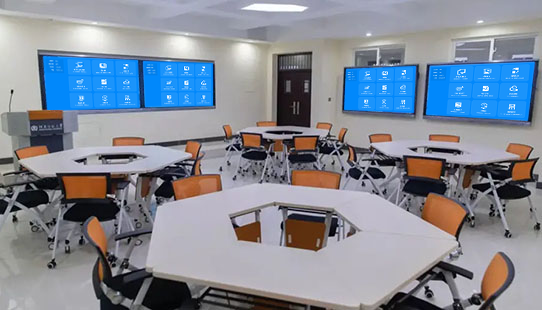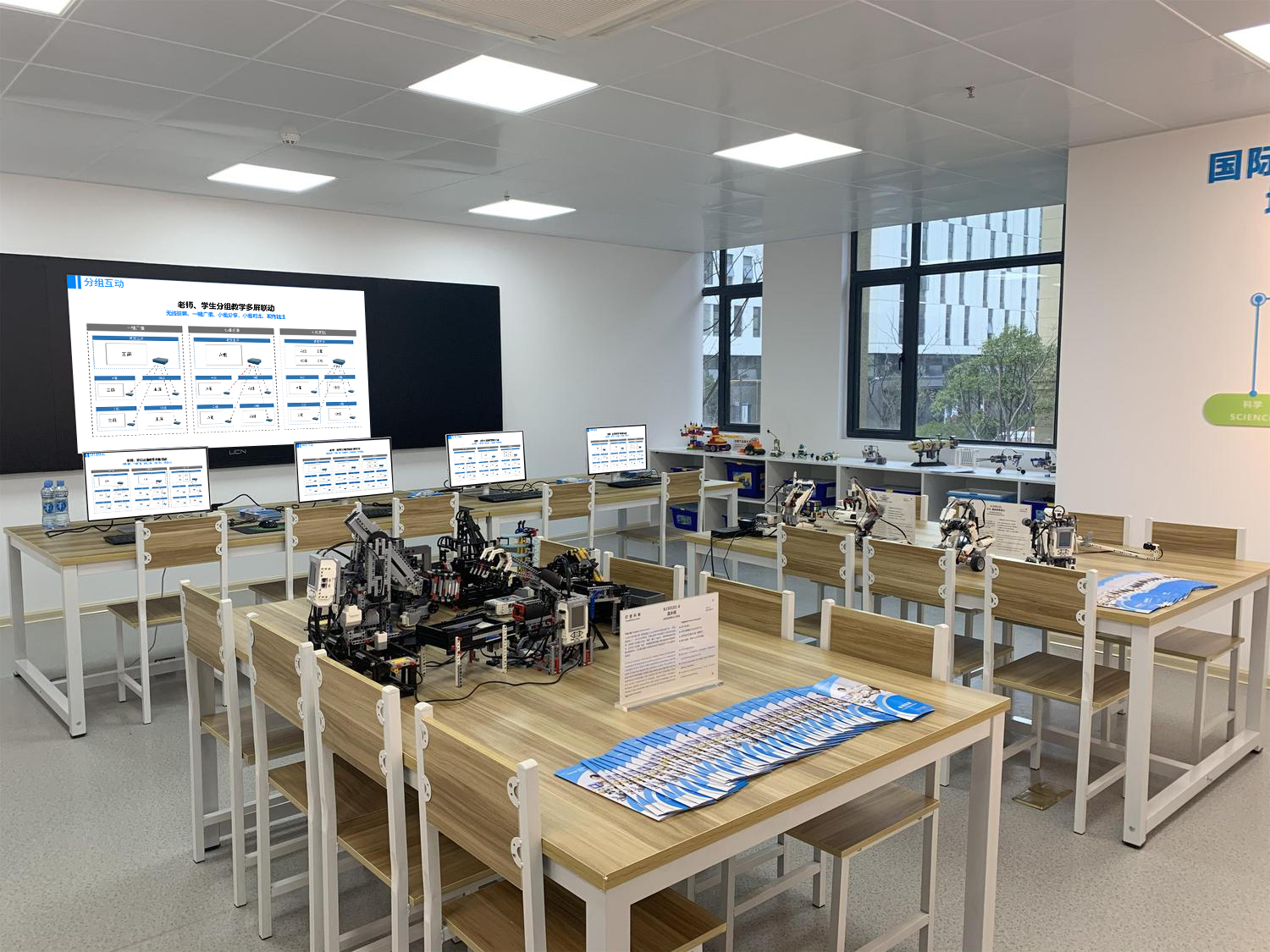Multi-Screen Interaction: An All-Scenario Collaboration Solution
The core of multi-screen interaction is to break the limitations of a single screen, allowing content to flow flexibly and respond collaboratively between different screens. Based on all-terminal compatible linkage technology and scenario-based function design, we can build a multi-screen collaboration system that covers scenarios like education, office, and display. This shifts information delivery from “one-way output” to “multi-directional linkage.”
Seamless Cross-Terminal Linkage, Unobstructed Content Flow
It supports access from various terminals, including computers, phones, tablets, and large screens, with compatibility for all operating systems like iOS, Android, and Windows, regardless of brand or model. Multi-screen pairing can be completed in 3 seconds using wireless mirroring, QR code connection, or NFC tap-to-connect, and up to 16 devices can be online and linked simultaneously without interfering with each other.
Content can flow in both directions. A document from a phone can be mirrored to a large screen with a single tap, a design drawing on a computer can be synchronized to a tablet for annotation, and content displayed on a large screen can also be received by all terminals in real time. The transmission maintains 4K high-definition quality, with audio-visual synchronization latency controlled within 20ms. Dynamic images are free of lag and ghosting, ensuring that complex charts, video clips, and other content are clearly presented.
Scenario-Based Function Design, Adapting to Diverse Needs
Education Scenarios: Multi-Screen Linkage Activates the Classroom
In a smart classroom, a teacher’s courseware can be mirrored to the main screen and each group’s split screen at the same time. The main screen displays key knowledge points, while the split screens push corresponding practice questions, balancing overall teaching with personalized tasks. Students’ homework submitted from their tablets is automatically summarized and displayed in a split-screen view on the main screen. The teacher can click on a specific homework to enlarge it for explanation, and during the explanation, the students’ terminals receive the annotated version synchronously.
During group discussions, each member’s tablet content can be mirrored in a split-screen view to their group’s small screen for in-group idea comparison. When a group has an excellent result, the teacher can switch it to the main screen with a single tap for the whole class to learn from. In a lab class, the images from a visualizer can be mirrored to the main screen and the students’ terminals synchronously. The teacher can use their phone to zoom in on the details, allowing students in the back to clearly observe every change in the experiment.

Office Scenarios: Multi-Screen Collaboration Improves Efficiency
In a conference room, attendees’ computers and phones can mirror content to the large conference screen at the same time. Proposal documents and data reports are displayed side by side in a split-screen view, making them easy to compare and analyze. If someone wants to add a case study video from their phone, they don’t need to switch the mirroring source; they can quickly mirror it to the corresponding area on the large screen simply by being near the terminal, making information integration more continuous.
During a remote meeting, multi-screen interaction is linked with the video feed. Mirrored content from a remote team and the content on the local large screen are displayed in a split-screen view. The suggestions annotated by attendees on their phones are synchronized to all terminals in real time, making remote collaboration feel like a face-to-face conversation. After the meeting, the content displayed on the large screen can be synchronized to each attendee’s terminal with a single tap, eliminating the need for an extra copy.
Display Scenarios: Multi-Screen Linkage Enhances the Experience
At an exhibition, a main display screen can loop a product promotional video, while a small screen in the negotiation area can mirror corresponding product parameters or case studies in real time based on a client’s needs. A salesperson can use a tablet to pull up detailed content a client is interested in and quickly mirror it to a nearby small screen for the client to understand intuitively.
In a store, a large screen at the entrance attracts foot traffic, and a small screen on the counter displays product details. Customers can scan a QR code with their phones to synchronize the content on the small screen to their own terminal for saving. When a new product is launched, you just need to update the content on the main control device, and all screens will update automatically, without the need for manual operation on each screen.
Management and Security: Stable Support for Multi-Screen Collaboration
Administrators can monitor the operating status of all screens in real time through a cloud platform, including whether the devices are online, the number of mirroring sessions, and whether there are any issues. They receive real-time notifications on their phones and can complete firmware upgrades and parameter adjustments remotely, without having to check each device individually.
The system supports setting permissions by scenario. In an educational scenario, only students and teachers in the class can participate in multi-screen interaction during class time. In an office scenario, a whitelist can be set to allow only authorized devices to mirror content. In a display scenario, it supports temporary authorization, so a visitor can only link to a screen after entering a verification code. All multi-screen interaction behavior is logged, ensuring information security.
This solution, centered on the efficient flow of multi-screen content, turns various terminals into “nodes” for collaboration rather than “islands.” It reduces the complexity of device operation and makes information delivery more precise. In education, office, and display scenarios, it truly enables efficient collaboration where a single screen starts the process and multiple screens link together.